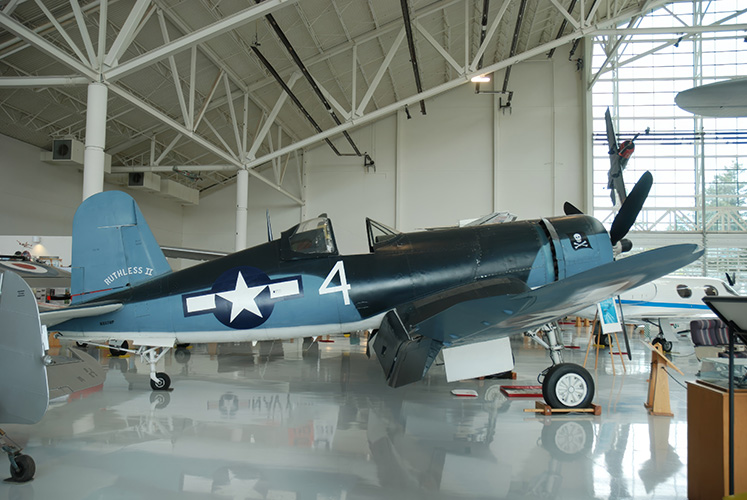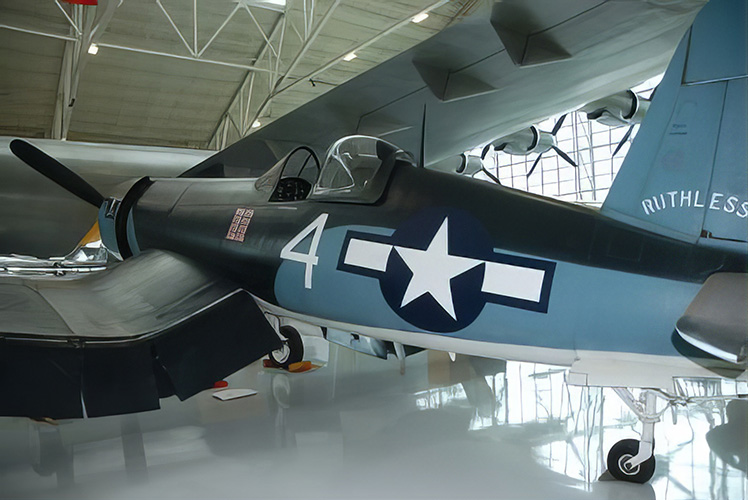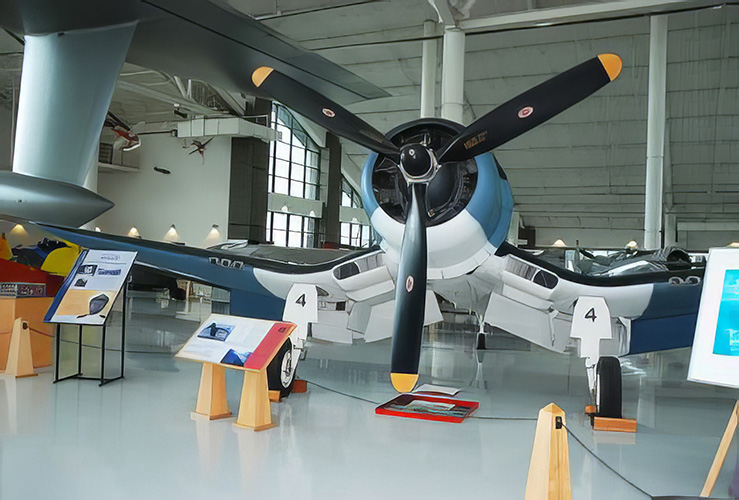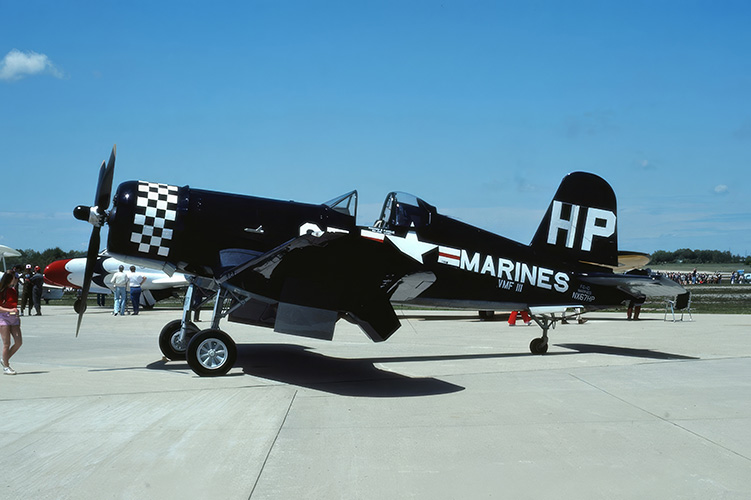Vought-Goodyear FG-1D Corsair “Ruthless II”
The heavy‐gunned and armor‐plated Corsair is credited with turning the tide of the Pacific air war. Its distinctive multi‐angled “bent” wings, long snout, and massive propeller made it a formidable opponent and was roughly equal in speed to the Japanese Zero.
The vintage Corsair aircraft’s blue scheme and tail-hook implied it was a carrier‐based aircraft. However, the cockpit that was located behind the big radial engine and wings made it difficult to see the carrier deck to land. The plane tended to bounce or stall — if pilots were lucky enough to feel their way to the deck in the first place.
Land‐based Marine units like “Pappy” Boyington’s “Black Sheep Squadron” proved more successful landing the Corsair on island airstrips. A redesign that raised the pilot seat and replaced the struts, consequently reducing the bounce, enabled the Corsair to be cleared by the Navy for carrier use.
The Corsair earned many nicknames as a WWII fighter plane, but none was as ominous as “Whistling Death,” which originated from Japanese soldiers who heard the plane diving menacingly above their positions. Also dubbed “Kamikaze Killer,” the fighter’s ability to descend quickly saved many Allied ships and carriers from Japanese kamikaze planes in the Pacific Theater. In fact, the Corsair had a 12:1 kill ratio against Japanese Zeroes.
History of “Ruthless II”
The Ruthless II Warbird vintage aircraft was built by Goodyear Corporation and was accepted into U.S. Navy service in 1945. The aircraft first flew with Fighter Bomber Squadron 80 and was later assigned to Marine fighter squadrons. By late 1947, as more modern fighters began to appear, Ruthless II was flying with reserve outfits. By 1951, Ruthless II was used primarily in training until it was stricken from Navy records in 1957.
In 1969, Ruthless II flew with the Fuerza Area Salvador (the Air Force of El Salvador) in the “Soccer War” between El Salvador and Honduras, where it received battle damage as evidenced by a patched bullet hole in its right wing. In 1975, former Corsair pilot and aircraft collector Howard Pardue purchased the plane from the Salvadoran Air Force. Its restoration was complete in 1984, and it was purchased by Evergreen in May of 1990. Until about 2015, the aircraft was on display at Evergreen Aviation & Space Museum in McMinnville, Oregon.
Ruthless II wears the paint scheme of Navy ace Oscar Chenowith Jr.’s aircraft. Chenowith was born in Salem, Oregon, grew up in McMinnville, where the aircraft was on display for several years. During World War II, he flew with the famed “Jolly Rogers Squadron” (VF‐17) and is credited with 8.5 victories.
Today, the airplane is undergoing a full restoration with Airpower Unlimited in Jerome, Idaho.





